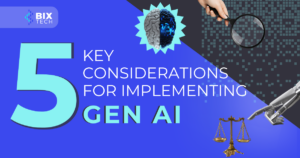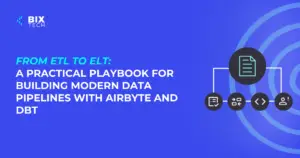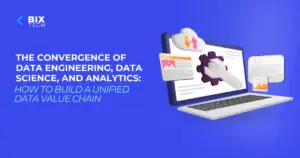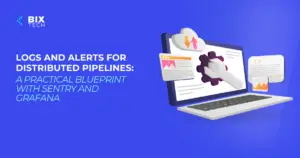Unlocking Growth: Key PostHog Capabilities & Why They Matter for SaaS Startups

CEO at BIX, crafting software that thinks and rethinks
In the highly competitive world of SaaS, understanding how users interact with your product is no longer a luxury, but a necessity. That’s where PostHog comes in. As a comprehensive product analytics platform, PostHog empowers SaaS startups to capture, analyze, and act on user behavior data while maintaining full control over the privacy of their data. In this post, we’ll explore PostHog’s essential features and why they’re so essential for SaaS startups looking to accelerate growth, streamline development, and maximize customer retention.
What Is PostHog?
PostHog is an open-source product analytics suite designed for modern product teams. Unlike traditional analytics tools that only track basic metrics, PostHog dives deep into user behavior, giving you the power to:
- Track every click, pageview, and event in your app
- Visualize user journeys and funnels
- Run A/B tests and feature flags
- Capture session replays for real user insight
- Integrate seamlessly with your existing stack
For SaaS startups, this means you can move faster, iterate smarter, and build exactly what your users want.
Why SaaS Startups Should Care About Product Analytics
Before we unpack PostHog’s capabilities, let’s address the “why.” Why is product analytics so critical for SaaS startups?
- Early-Stage Validation: Quickly validate new features and product-market fit with real user data.
- Iterative Development: Prioritize roadmap decisions based on how users actually use your product.
- Customer Retention: Spot friction points and drop-offs before they become churn catalysts.
- Data Ownership: Maintain control over sensitive user data—vital for building trust and meeting compliance needs.
Actionable Takeaway:
Start implementing product analytics at MVP stage to maximize learning and growth from day one.
Core PostHog Capabilities That Supercharge SaaS Startups
Let’s break down the features that make PostHog a game-changer for SaaS companies.
1. Event Tracking & Custom Analytics
What It Does:
PostHog allows you to track any user action—clicks, form submissions, feature usage, and more—without writing custom code for every event.
Why It Matters:
With granular event tracking, SaaS teams can pinpoint which features drive engagement, what’s being ignored, and where users are dropping off. This data is invaluable for prioritizing feature development and bug fixes.
Actionable Takeaway:
Define and track your most important activation and retention events to measure real product success.
2. Funnels & Conversion Analysis
What It Does:
Build custom funnels to visualize the steps users take toward key goals (like signing up or upgrading), and see exactly where they drop out.
Why It Matters:
Funnels help SaaS startups zero in on bottlenecks in onboarding, checkout, or feature adoption—enabling targeted improvements that boost conversion rates and customer lifetime value.
Actionable Takeaway:
Regularly analyze your conversion funnels and experiment with optimizations at high-drop-off points.
3. Session Recording & Heatmaps
What It Does:
Session replays let you watch real users interacting with your app, while heatmaps visualize aggregate interaction hotspots.
Why It Matters:
These tools provide qualitative, context-rich insights into how users experience your product—surfacing bugs, UX pain points, and opportunities for delight.
Practical Example:
A SaaS startup used session recordings to spot a confusing navigation pattern causing user frustration. A simple UI redesign led to a 35% reduction in support tickets.
Actionable Takeaway:
Schedule regular reviews of session replays to uncover and address hidden usability issues.
4. Feature Flags & A/B Testing
What It Does:
PostHog lets you release new features to select users, run controlled experiments, and measure real-world impact—all without redeploying your codebase.
Why It Matters:
Feature flags reduce risk when launching new functionality, while A/B testing ensures you’re making data-driven product decisions.
Use feature flags for controlled rollouts and A/B tests to validate changes before wide release.
5. Self-Hosting & Data Privacy
What It Does:
Unlike many SaaS analytics platforms, PostHog can be self-hosted, giving you full control over your data.
Why It Matters:
For SaaS startups dealing with sensitive B2B or regulated industries, data privacy is paramount. Self-hosting supports compliance and builds customer trust.
Practical Example:
A fintech SaaS company needed to comply with stringent data policies. By self-hosting PostHog, they maintained analytics capabilities without compromising on privacy.
Actionable Takeaway:
Consider self-hosted analytics to meet compliance needs and assure enterprise customers.
Integrations & Extensibility
PostHog offers a robust plugin system and API, allowing you to integrate with popular tools (Slack, Segment, Zapier, etc.), automate workflows, and enrich your analytics with external data.
Example Integration:
Connect PostHog with your CRM to trigger automated outreach when a user hits a milestone event—improving onboarding and upsell opportunities.
Actionable Takeaway:
Leverage integrations to automate user engagement and close the feedback loop between product and growth teams.
PostHog in Action: Real-World Impact for SaaS Startups
The benefits of PostHog are not just theoretical. Across the SaaS world, startups are using PostHog to:
- Identify high-converting acquisition channels and double down on them
- Spot and fix onboarding friction in days, not months
- Test pricing page redesigns safely with feature flags
- Prove product-market fit with hard data, not gut feel
For more on how analytics and AI are revolutionizing the SaaS landscape, check out our deep dive on data-driven decision making in business.
How PostHog Stacks Up: Advantages Over Traditional Analytics
- All-in-One Platform: No need to juggle multiple tools for analytics, session recording, and experimentation.
- Open Source & Self-Hosted: Retain full data ownership and minimize vendor lock-in.
- Developer-Friendly: Clean APIs, easy setup, and extensibility to match your stack.
- Privacy-First: Built with GDPR and regulatory compliance in mind.
For SaaS teams aiming for rapid, sustainable growth, PostHog delivers actionable insights without sacrificing control or agility. In fact, innovative product analytics like PostHog are part of why companies are being recognized for tech excellence, as highlighted in the 2024 Clutch Global Awards.
Action Plan: Getting Started with PostHog
- Map Your Key Metrics: Define what success looks like—activation, retention, conversion.
- Implement Tracking: Set up PostHog and begin tracking core events from the get-go.
- Analyze & Iterate: Use funnel, session, and A/B testing features to guide product decisions.
- Automate & Integrate: Connect PostHog to your broader SaaS ecosystem for seamless growth.
- Monitor & Optimize: Continuously review data and adjust your strategy as your product and users evolve.
Frequently Asked Questions (FAQ)
1. Is PostHog suitable for very early-stage SaaS startups?
Absolutely! PostHog is lightweight enough to start with an MVP and scales as you grow. Its open-source nature means you can start for free and expand functionality as needed.
2. How does PostHog ensure data privacy and compliance?
PostHog can be fully self-hosted, meaning all data stays on your infrastructure. This supports GDPR, HIPAA, and other regulatory requirements.
3. Can I use PostHog alongside other analytics tools?
Yes. PostHog can run in parallel with tools like Google Analytics or Mixpanel, allowing you to compare insights or gradually transition your stack.
4. How technical do I need to be to set up PostHog?
Basic setup is straightforward, especially for cloud-hosted options. For self-hosting, some DevOps knowledge is helpful but well-documented.
5. Does PostHog support mobile apps as well as web?
Yes, it provides SDKs for web, iOS, and Android, so you can track user behavior across platforms.
6. How can PostHog help reduce user churn?
By revealing drop-off points, friction areas, and underused features, PostHog helps you proactively address issues before they turn into churn.
7. What’s the difference between PostHog and traditional web analytics?
Traditional analytics (like Google Analytics) focus on aggregate pageviews and sessions. PostHog offers deep, event-based insights, session replays, and experimentation tools tailored for product teams.
8. Can I use PostHog for A/B testing and feature flagging?
Definitely! PostHog’s built-in tools allow you to run experiments and roll out features safely, measuring real impact on user behavior.
9. Is PostHog open source?
Yes. You can use, modify, and self-host PostHog under an open-source license, with commercial options for advanced features.
10. Where can I learn more about integrating AI with analytics for SaaS?
Explore our guide on AI-driven innovations in software development for practical strategies and examples.
Conclusion
For SaaS startups, actionable data is the ultimate growth lever. PostHog stands out as a modern, flexible, and privacy-conscious analytics platform that empowers you to build better products, delight users, and scale with confidence.
Ready to unlock your SaaS startup’s full potential? Start tracking, analyzing, and iterating with PostHog today—and turn insights into growth.
Did you find this guide useful? Check out more resources on analytics and SaaS innovation here!









